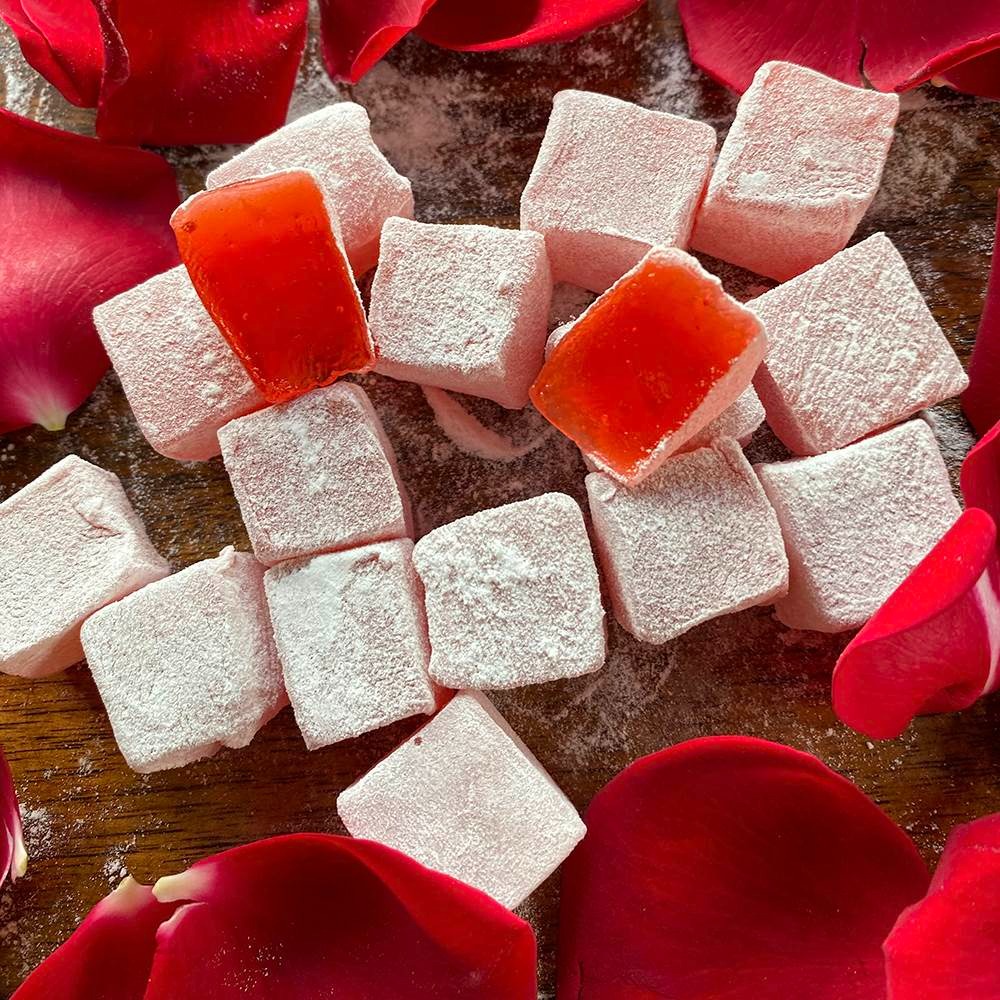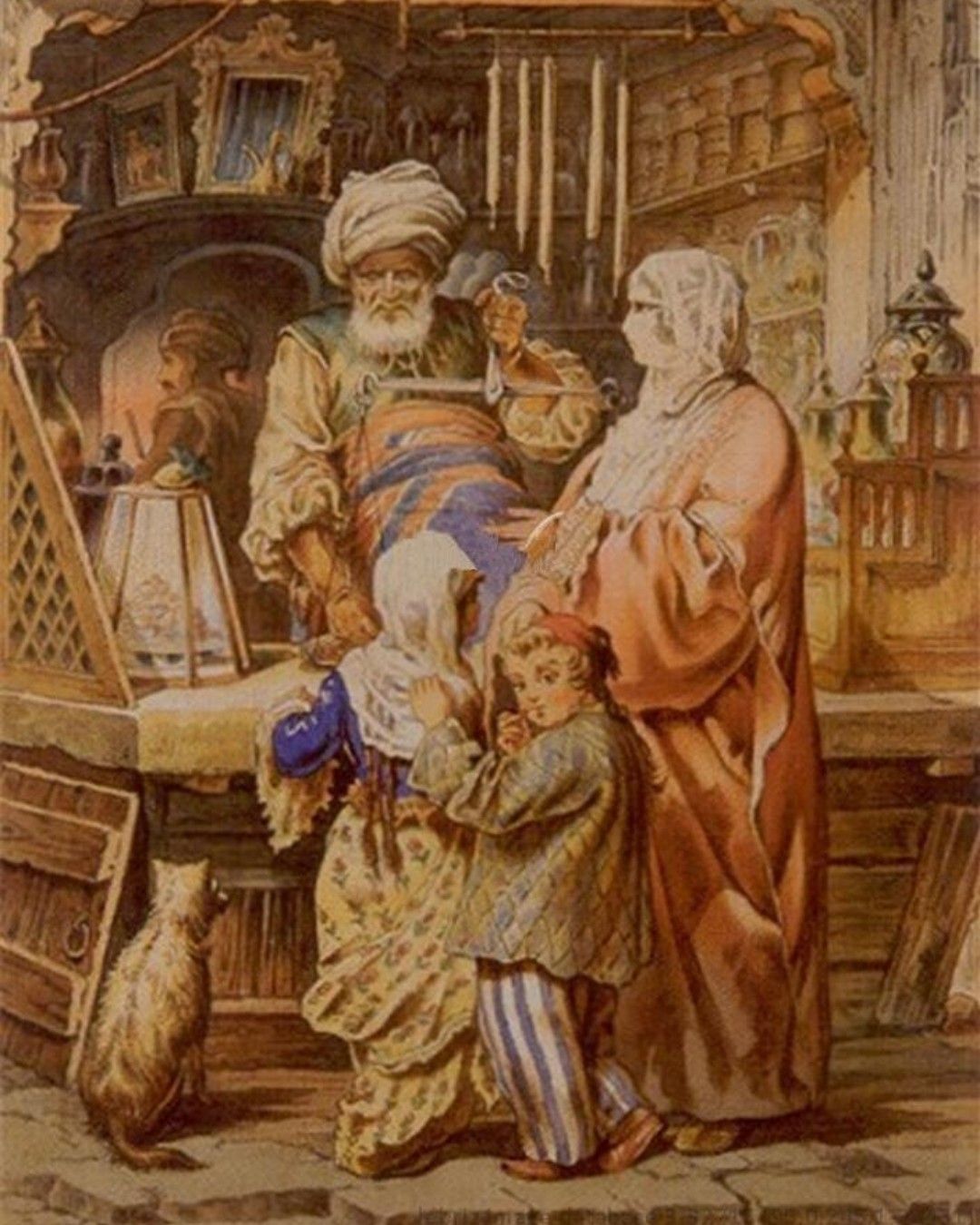 Ali Muheddin Haci Bakir
Ali Muheddin Haci Bakir  Loukoum à la Rose
Loukoum à la Rose What if we told you the story of the loukoum?
At the end of the 18th century, the Ottoman Empire was crazy about confectionery, mainly gum arabic made from honey and plants. Their first uses were of a medicinal nature. That is, until a confectioner named Ali Muheddin Haci Bakir made an invention that revolutionized the world of confectionery.
Although the sugar factories known until then were already satisfying the Ottomans, Ali; then based in Istanbul , was looking for a product with the perfect consistency. He came up with the idea of combining corn starch with water and sugar. And that's how the first Lukum was created.
It was an immediate success, and in 1776 he moved into his confectionery shop and became a resounding celebrity. His loukoum, or rather rahat al houlkoum (rest of the throat or gullet in Arabic), as it was called, was so popular that Ali was appointed grand master confectioner of the sultan's palace.
Ali Muheddin made numerous appearances at fairs and exhibitions, and accumulated a good number of medals. His shops flourished everywhere, and his confectionery spread from the Middle East to North Africa and of course to Europe. There is still a shop of the descendants of Ali Muheddin Haci Bakir in the heart of Istanbul , not far from the Spice Bazaar.
From now on, the loukoum, as it is called today, is embellished with rose water in its most famous original version, but it has since been declined in multiple flavors and is now also embellished with dried fruits.
It goes wonderfully with Turkish coffee or espresso or red tea, the national drink in Turkey.
Now the recipe is available in an impressive number of variations, Turkish confectioners have shown an overflowing imagination in order to expand the range of sweets made from loukoums.
You will find Ali's wonderful invention in the form of classic loukoums, but also cream sarmas, squares, or fingers. It is difficult to list all the varieties that exist. But our challenge now is to make you discover as much as possible and to make you taste the rest of the throat and the palate too.



